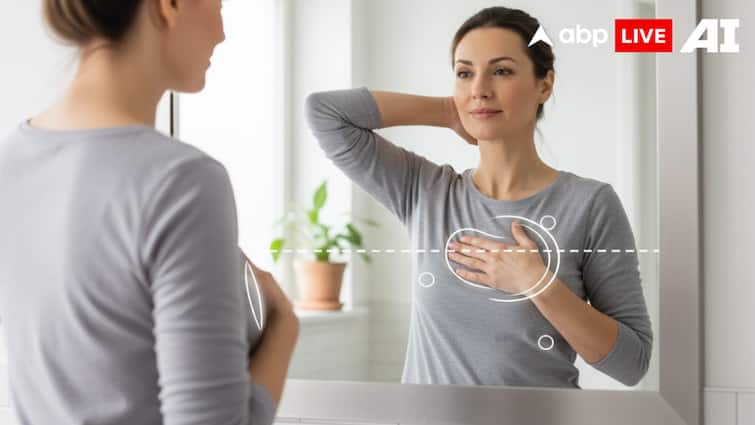Show Quick Read
Key points generated by AI, verified by newsroom
{By: Dr Rohan Khandelwal}
Globally, breast cancer (BC) is the most detected neoplasm in women. Breast self-examination (BSE) is an effective screening technique that enables women to learn about the composition of their breasts and assist in the early identification of any potential breast abnormalities . Breast cancer is a very commonly discovered cancer among women globally. Projected to reach 2.3 million cases and 685,000 deaths in 2020, breast cancer will eclipse lung cancer as the most frequently diagnosed cancer and rise to the fifth position in the worldwide cancer mortality rate.
ALSO READ: Building Healthy Habits Early: Why Schools Must Lead The Fight Against Childhood Obesity
Why Self-Breast Self-Examination Matters
A breast cancer screening is curated to identify cancer at an early stage, before the cancer becomes palpable. The test for screening is typically performed on asymptomatic patients who are highly susceptible to developing breast cancer, and the screening may not be useful in all women who develop breast cancer. Screening is essential to decrease morbidity and mortality rates, as well as for the early detection of breast cancer . Many methods have been developed to help detect malignant cancer early.
When To Perform BSE
Women can begin practicing BSE around age 20 and continue throughout life, including during pregnancy and menopause. Ideally, BSE should be done monthly:
- For menstruating women: A few days after the period ends, when breasts are least tender
- For non-menstruating women: Choose a consistent day each month
- For those on hormone therapy: Consult a healthcare provider for timing
What To Look For
During BSE, be alert for the following symptoms. If any of these changes are noticed, consult a healthcare provider promptly.
- New lumps or masses
- Bloody or unusual nipple discharge
- Swelling or thickening
- Skin changes like redness, dimpling, or scaliness
- Pain or changes in nipple direction
- Enlarged lymph nodes in the armpit
How To Perform BSE
Breast self- examination involves both visual and physical examination. Below is a guide:
1. Front Of A Mirror
- Stand with arms at sides and observe both breasts for symmetry, shape, and skin changes
- Raise arms overhead and repeat the observation
- Press hands on hips and lean forward to tighten chest muscles, checking for contour changes
2. Lying Down
- Lie flat with one arm behind the head and a pillow under the shoulder
- Use the pads of the three middle fingers of the opposite hand to examine the breast.
- Apply three levels of pressure: light (surface), medium (middle tissue), and firm (deep tissue)
Use one of the following patterns to ensure full coverage:
- Lines: Move fingers up and down across the breast
- Circles: Start at the outer edge and spiral inward
- Wedges: Move from the outer edge toward the nipple and back
It is important for women to develop habits of being aware of breast self-examination and maintaining breast health. Acquiring knowledge about the process of breast growth can assist individuals in upholding optimal breast health by understanding their own normality and recognising any abnormal alterations. People with advanced detection skills live longer and have a better quality of life. Mammography and CBE are the two diagnostic methods recommended by the WHO.
BSE is a secondary approach in the absence of CBE and mammography, despite its effectiveness in raising awareness and detecting breast abnormalities.
The author, Dr Rohan Khandelwal, is the Associate Director, The Breast Centre, CK Birla Hospital, Gurugram.
[Disclaimer: The information provided in the article, including treatment suggestions shared by doctors, is intended for general informational purposes only. It is not a substitute for professional medical advice, diagnosis, or treatment. Always seek the advice of your physician or other qualified healthcare provider with any questions you may have regarding a medical condition.]
Check out below Health Tools-
Calculate Your Body Mass Index ( BMI )
Calculate The Age Through Age Calculator

